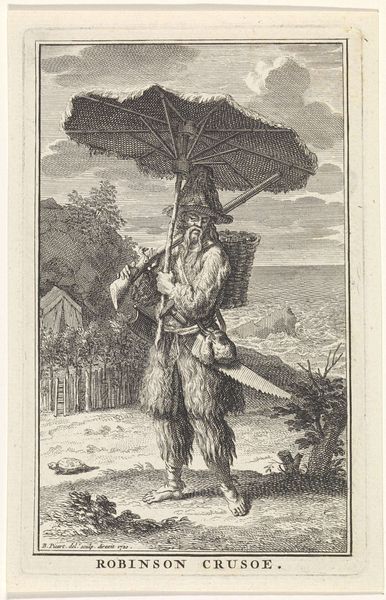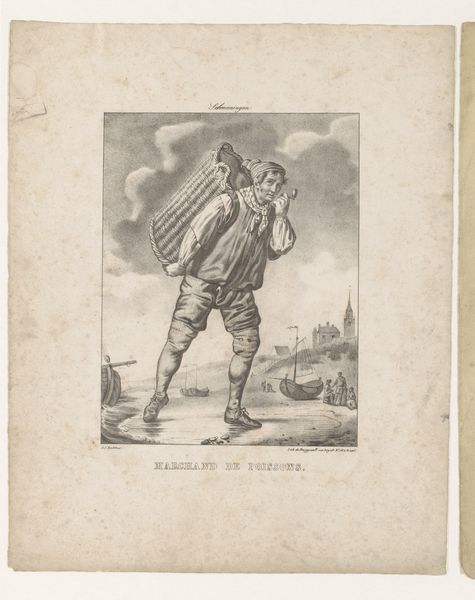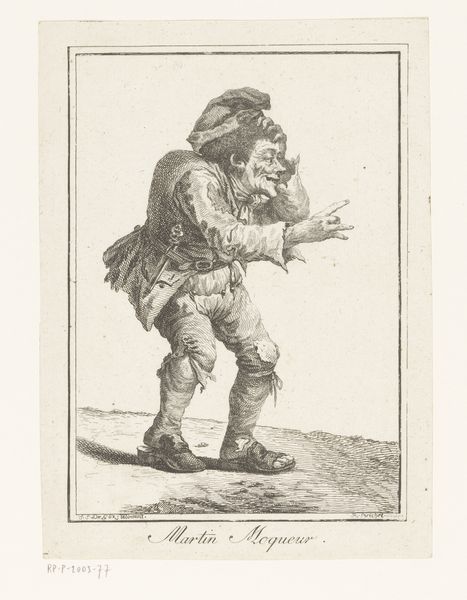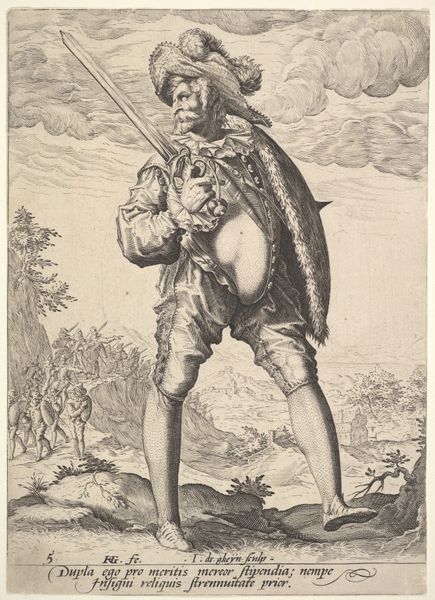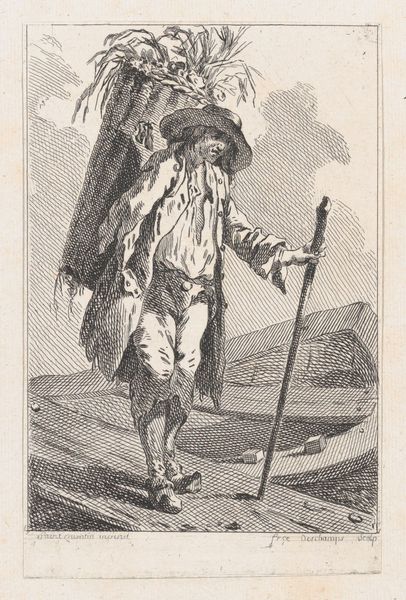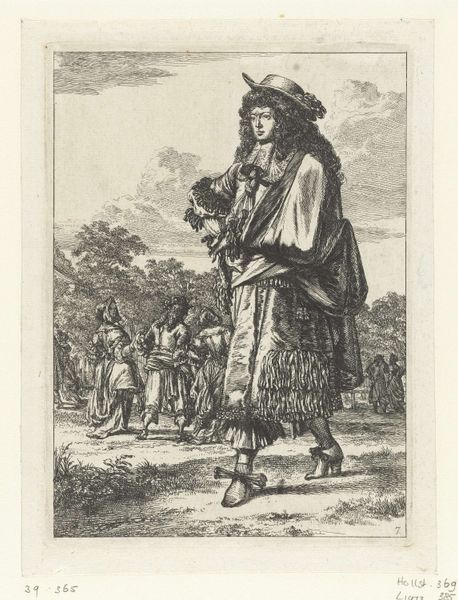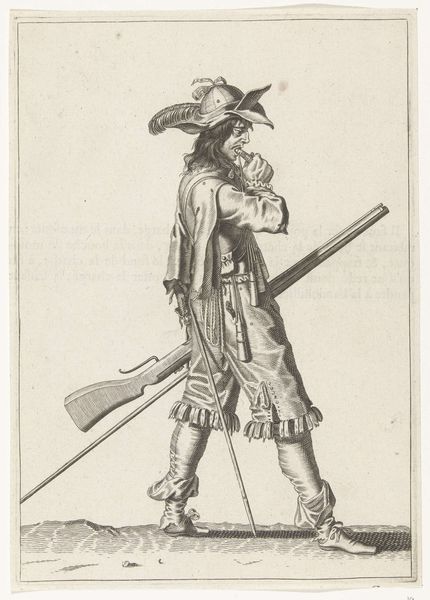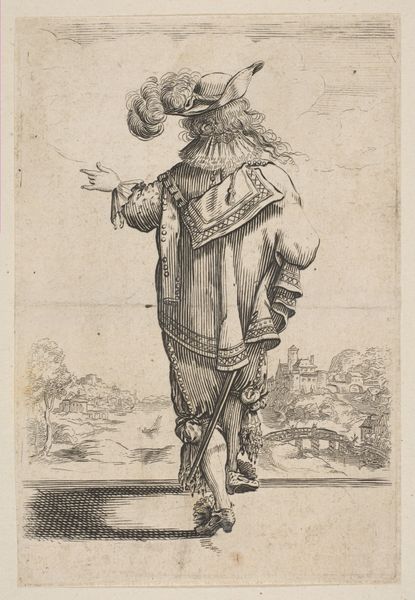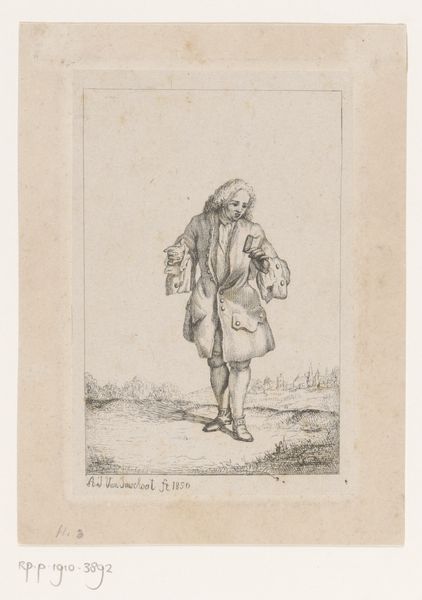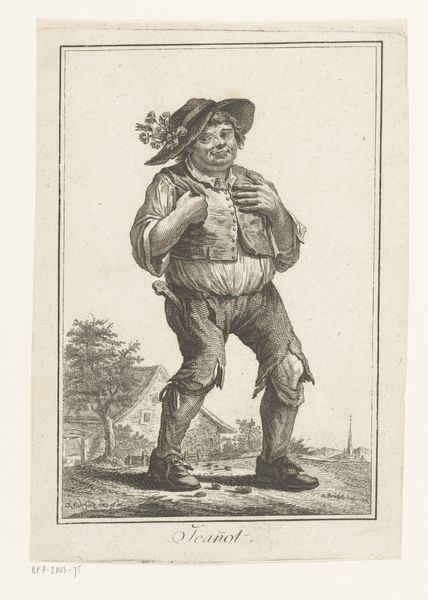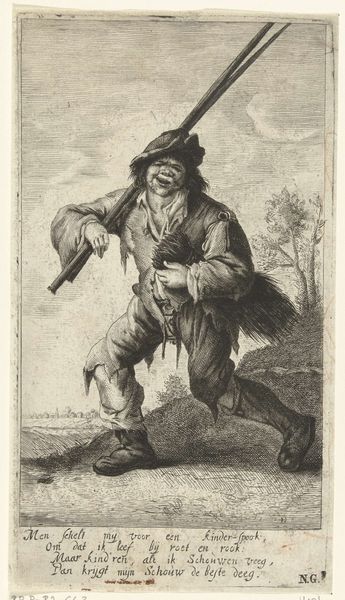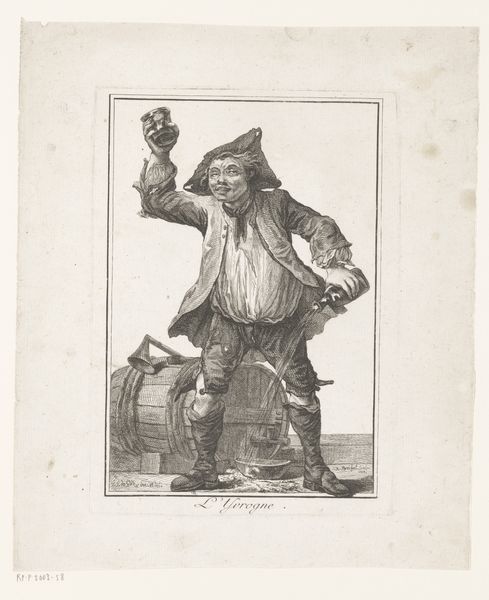
Bedelaar met krukken en een houten been in een landschap 1784
Dimensions: height 229 mm, width 164 mm
Copyright: Rijks Museum: Open Domain
This etching by Joseph Franz Freiherr von Goez presents a beggar with crutches and a wooden leg set within a sparse landscape. The composition’s starkness, achieved through the use of fine, controlled lines, directs our focus to the figure’s plea. This is intensified by the contrast between the detailed rendering of the beggar and the simplified background. Goez uses line and form to destabilize traditional notions of beauty and value. The beggar's fragmented body and tattered clothes challenge the period's idealized human form, reflecting the social realities often ignored in artistic representation. Through the semiotic lens, the crutches and wooden leg symbolize dependency and the loss of autonomy, critiquing social structures that marginalize individuals. Ultimately, the stark formality and lack of embellishment emphasize the beggar's vulnerability. This not only evokes empathy but also forces a re-evaluation of aesthetic and ethical values within society. The artwork confronts viewers with uncomfortable truths, questioning established norms of representation and social responsibility.
Comments
No comments
Be the first to comment and join the conversation on the ultimate creative platform.
